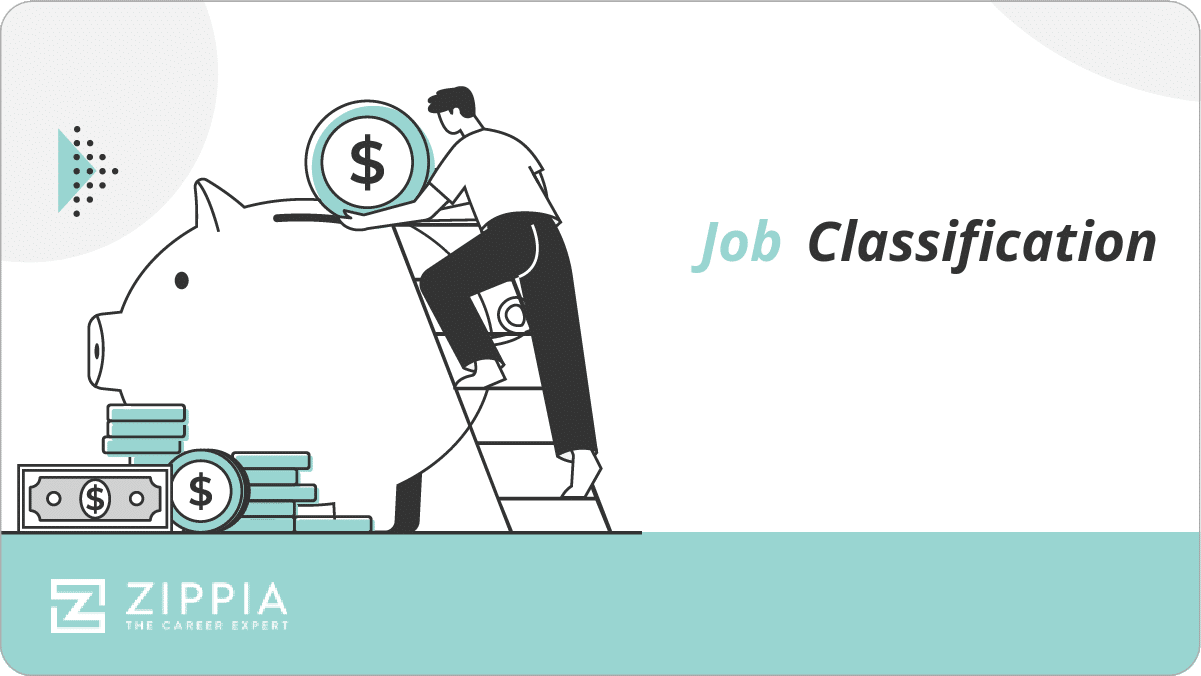- Determine Your Worth
- Average Salaries In The US
- What Is A Salary Range?
- What Is A Base Salary?
- What Is A Pay Grade?
- Average Salary Out Of College
- Your Salary History
- Competitive Pay
- Salary Vs. Hourly Pay
- What Is A Job Classification?
- How Many Hours Can A Teen Work?
- Average Work Hours Per Week
- What Is Annual Income
- Gross Salary
- How Many Hours Is Full Time
- How Many Work Hours In A Year
- Minimum Wage For Workers Who Receive Tips
- New York State Minimum Wage Rates
- Get A Raise
- Benefits
- Paid Time Off Policy (PTO)
- Leave of Absence Policy
- What Are Floating Holidays?
- What Are Employer-Paid Holidays?
- How Does Holiday Pay Work
- How Does A Stipend Work
- Cash a Paycheck Without a Bank Account
- What Is Compensatory Time?
- What's Unlimited Vacation?
- What Is A Commission?
- What Is A Mileage Deduction?
- Semimonthly Vs Biweekly Pay Schedules
- Flexible Spending Account
- Stock Options At Job
- Benefits Package
- Overtime Pay
- Workers Comp
- What Is Fmla
- Hazard Pay
- Tuition Reimbursement
- Discretionary Vs. Non-Discretionary Bonus
- What Are Union Benefits
- What Is An HRA Account
- What Is Cobra Insurance
- Negotiation
- What Exactly Is a Job Offer?
- How To Negotiate Salary
- Exempt Employee
- How To Answer Salary Requirements
- Employment History
- What Are Your Salary?
- Salary Counter Offer
- How To Answer Salary Expectations
- How Many Hours Is Part Time
- Signing Bonus
- Cost Of Living Adjustment
- How To Ask For A Salary Advance
- What Is Fair Labor Standards Act
Find a Job You Really Want In
Job classification is a system of looking at job descriptions and the duties a position requires and then categorizing them.
It sounds pretty confusing and it’s not something you’d want to do by yourself – luckily there’s already a really good system of classification in place, and we’ll discuss that more later.
The reason that job classification structures exist is to put jobs in the right divisions of a company, consider skill levels, compensation, compare some jobs to others within the company; the list goes on and on. It’s actually a very useful tool and, when used correctly, it can benefit the employer and the employee. Let’s look a little deeper.
Key Takeaways:
-
Job classification classifies a company’s positions in a standardized scale based on skills, responsibilities, and experience level.
-
Job classifications can be broken down into job families, which then are broken down into job functions, and finally into job levels.
-
Job classifications help provide transparency, accountability, and efficiency.
-
Broadband pay structure uses a small number of salary ranges within a company to allow greater compensation flexibility.
-
The Korn Ferry Hay System assigns points to evaluate job components and the value of that job compared to other jobs.

What is Job Classification?
Job classification is also called job evaluation, so you may hear both terms interchangeably – don’t worry, they’re the exact same thing. Job classification takes a hard look at all the duties and responsibilities in a job description and tries to create the most appropriate job title to match what the candidate will do and the standards they’ll be held to. The classification, or to be more accurate, many job classifications across the company, can form the basis of that company’s HR policies and they can determine who is hired.
Using an in-depth job-classification system is a great benefit to a company, human-resources departments, and to the employees. Rather than looking at just the job title, a thorough examination of the duties required gives a much better idea of the position.
Think of the title Administrative Assistant:
If you’ve ever known people who have this position, you know that the range of duties is extraordinary. Some of them simply answer phones and help with some filing, sending letters, and other clerical duties.
Some Administrative Assistants are the right hand to their boss, they often know more about the inner workings of the company than anyone else in their division and can handle anything that comes their way. Clearly, these two titles are similar, but when you look at the responsibility levels you realize the pay should probably be much higher for one of these assistants.
Not all companies use a formal job classification system, in fact you’ll typically see it more often in large companies, government, nonprofit companies, and colleges or universities. This structured organization gives everyone the same information on the company.
If someone wants to work their way up from one job into a higher-ranking position, the job classification tells them what skills they need and often gives them an idea of how to best progress. It also gives them an idea of what the compensation will be, so they’re incentivized to advance.
How does job classification work?
Though there are many different ways to organize a job classification system at a business, there are some similar characteristics. As already discussed, job classification is used by a company to analyze a position’s responsibilities to create a title. This requires some level of categorization.
Most job classification systems follow a similar system of categorization that includes:
-
Job family. Job family is a overarching classification for jobs that perform similar work. However jobs within the job families will require different levels of skills and responsibilities. An example of a job family would a company’s human resources department where all members within the department perform similar, yet unique, tasks.
-
Job function. A job function classifies positions within a job family that perform similar roles, though not necessarily at the same level. For example, within human resources, there will be the human resource associates who are all tasked with a similar role at the company.
-
Job level. The job level provides the specific position of the job within the company’s hierarchy. It is based on the skill level and experience of the position. For example an entry-level human resource associate will rank underneath a senior human resource associate.
A company can uses this branching system of job classification to keep every position within the company at a specific reference point. This makes it easier for a company to organize its job classifications.
What Results from Job Classification?
Job classification across a company results in a hierarchy of sorts. It takes the responsibilities and weighs them to create fair and equitable compensation and “power structure” across the entire company.
If you stop for a minute and think about that, it makes a lot of sense. You can imagine that the CEO of a company has a lot of tasks and they are higher-level tasks that require education, experience, and some crucial decision-making skills. A new employee in the stock room is only going to be responsible for putting products in the right place. By coming up with a job-description that divides all jobs up by task, you should be better able to determine compensation and structure within the company.
Now pull in all of the other employees in that company and their job titles and descriptions and you come up with an organizational chart that can be used to establish authority, superiority, a list of steps available for advancement, and clear-cut pay structures.
While you’ll typically see large corporations use job classifications, you might also see smaller ones or even mid-sized companies use a more informal type of job classification. This helps them group similar positions into a broadband pay structure.
Broadband Pay Structure
That takes us to our next topic, broadband pay structure. This is a common compensation structure that uses a small number of salary ranges within a company to allow greater compensation flexibility. Companies that use the broadbanding method are often looking to flatten a hierarchy and bring people to a more level playing field. Its benefits are that it can create a teamwork atmosphere and it’s thought to make rewarding outstanding performers easier.
Another thing that broadband pay structures do is allow for a jump in pay-grade, even if you continue to do the same job. It’s a great way to recognize good employees and try to keep them within your company and potentially advance them along if they continue to outperform.
Companies that don’t use the broadband structure might use something like a market-based compensation structure. In this situation the market pay data is analyzed to see what the common pay for a particular position is. Then, the company decides if it’s going to offer more, less, or meet the market demands for that position.
Korn Ferry Hay System of Job Classification
One of the best known systems for job classifications is the Korn Ferry Hay System. Rather than just basing the classification on a sentence or two in a description or a job title, they have a system in place that looks at the real value of work, putting the right people into those roles, and then compensating them fairly. This is a win/win/win situation all the way around.
To do this, Korn Ferry Hay has created a point system that they use to assign points to evaluate job components and the value of that job compared to other jobs. They dive into a company and look at three components across all jobs. They review the knowledge required to do the position, the amount of problem solving that has to be done, and the level of accountability each position has.
If we take our example from above, you can see where the CEO would probably have a lot of points because the position requires education and extensive knowledge of the industry, an extreme amount of problem solving, and complete accountability in some situations – more than anyone else in the company. Whereas our stock room employee doesn’t need an education and only needs limited training to line up inventory with it’s sku number on the shelf. There’s virtually no problem solving involved and the accountability would be minimal, at best.
While our example is a big stretch for illustration, you can see how there could be similar positions that would need a thorough evaluation and a deep dive review of the level of responsibility, knowledge, accountability as well as each task the person has to perform before a hierarchy structure can be established. Who gets paid more for company X, the Chief Financial Officer, or the Chief Operating Officer? Or maybe, according to their position descriptions, they deserve similar compensation.
Another benefit of the Korn Ferry Hay is it doesn’t just help companies determine fair pay it can also help employees. No more wondering what a good salary is for the position, it creates a fair range that employee and employer can feel comfortable with. It also gives both parties data that helps negotiate a salary.
This system is also so widely accepted that they can claim to have a global reach. This level of knowledge and data means that they understand what the pay structure is for similar positions in different countries. This gives you the power to compare the salary requirements you have across the globe and see if they actually line up with the job you hope to get. You could find that you need more education or experience before you can make that sort of money. On the flip side, you could discover that you deserve to be paid way more than you are. What a bonus that would be!
More Information About Job Classification
Another benefit that comes from a job classification system is that it helps to prevent discrimination and allows for more even and fair-handed personnel management. If you’re being paid for your position, based on job duties within the position, then it doesn’t leave any room for discrimination. People holding the same position, no matter what their age, gender, race, sexual orientation, etc. is will receive equal pay because there is no wiggle room.
This is a big benefit for both employers and employees. For employees, it ensures fair treatment when it comes to hiring and compensation, regardless of any personal characteristics that could cause institutional discrimination. For the company, holding firm to your job classification protects you from lawsuits for discrimination. It can also help you get the right people in the right positions. When everyone feels they’re being treated fairly and compensated correctly, it leads to a happier job force and better production.
- Determine Your Worth
- Average Salaries In The US
- What Is A Salary Range?
- What Is A Base Salary?
- What Is A Pay Grade?
- Average Salary Out Of College
- Your Salary History
- Competitive Pay
- Salary Vs. Hourly Pay
- What Is A Job Classification?
- How Many Hours Can A Teen Work?
- Average Work Hours Per Week
- What Is Annual Income
- Gross Salary
- How Many Hours Is Full Time
- How Many Work Hours In A Year
- Minimum Wage For Workers Who Receive Tips
- New York State Minimum Wage Rates
- Get A Raise
- Benefits
- Paid Time Off Policy (PTO)
- Leave of Absence Policy
- What Are Floating Holidays?
- What Are Employer-Paid Holidays?
- How Does Holiday Pay Work
- How Does A Stipend Work
- Cash a Paycheck Without a Bank Account
- What Is Compensatory Time?
- What's Unlimited Vacation?
- What Is A Commission?
- What Is A Mileage Deduction?
- Semimonthly Vs Biweekly Pay Schedules
- Flexible Spending Account
- Stock Options At Job
- Benefits Package
- Overtime Pay
- Workers Comp
- What Is Fmla
- Hazard Pay
- Tuition Reimbursement
- Discretionary Vs. Non-Discretionary Bonus
- What Are Union Benefits
- What Is An HRA Account
- What Is Cobra Insurance
- Negotiation
- What Exactly Is a Job Offer?
- How To Negotiate Salary
- Exempt Employee
- How To Answer Salary Requirements
- Employment History
- What Are Your Salary?
- Salary Counter Offer
- How To Answer Salary Expectations
- How Many Hours Is Part Time
- Signing Bonus
- Cost Of Living Adjustment
- How To Ask For A Salary Advance
- What Is Fair Labor Standards Act





